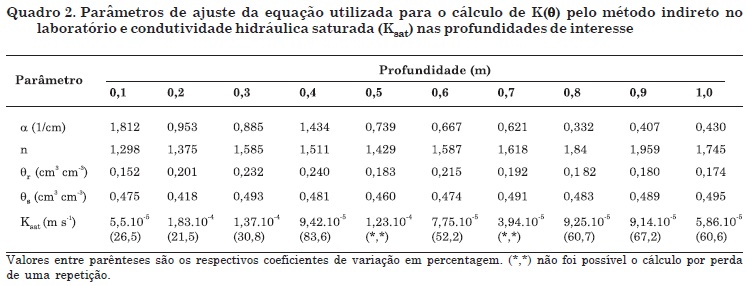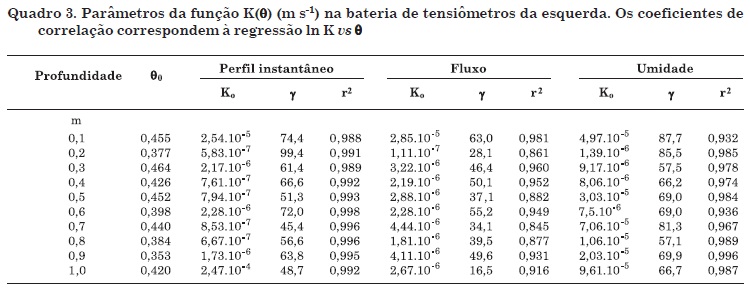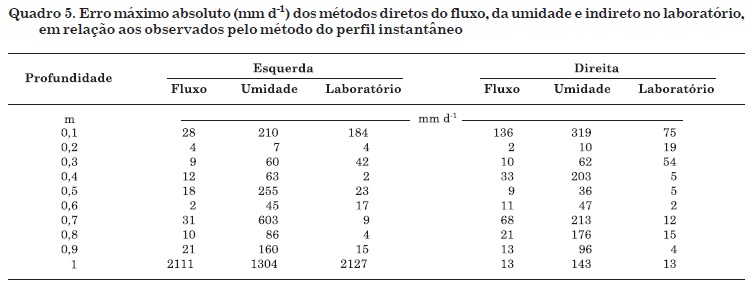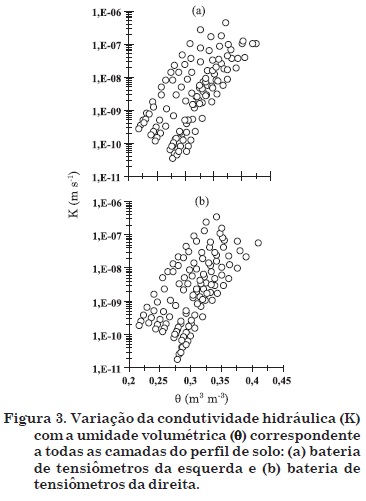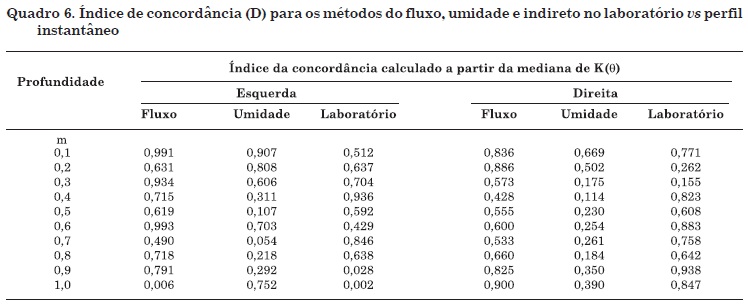The hydraulic conductivity, determined as a function of the volumetric soil water content K(θ), is essential to solve, e.g., drainage problems. However, the results of different methods vary according to the different assumptions. The objective of this study was to compare direct field methods (Instantaneous Profile, Flux and Humidity) and indirect laboratory methods for estimating the hydraulic conductivity as a function of soil water content, K(θ). The experiment was carried out in Piracicaba, State of São Paulo (Brazil), with a sandy clay texture Typic Hapludox, from June to August 1999 (low rainfall period). The K(θ) functions derived from different methods were compared using the maximum error and concordance index. It was difficult to determine the K(θ) function at a near-saturation water content, where the error for all methods was highest. The concordance of the unit gradient (Flux and Humidity) and indirect laboratory methods with the Instantaneous Profile method was moderate to low. This shows that the assumption of a unit gradient for a sandy clay texture Typic Hapludox results in erroneous estimates of the K(θ) values, due to the non-homogeneous soil profile.
drainage; infiltration; instantaneous profile; unit gradient; tensiometer



